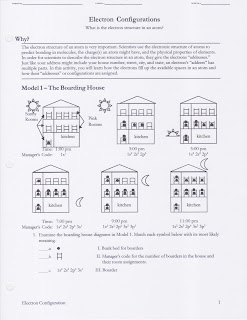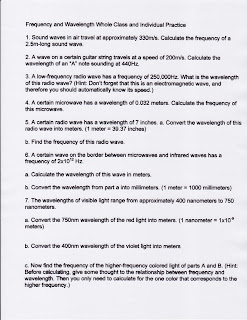ESSENTIAL QUESTION: Why do electrons emit light energy?
RELEVANCE: How can I use an electron’s movement to determine its element?
NGSSS: SC.912.P.10.1; MAFS.912.N-Q.1.1; LAFS.910.WHST.1
LEARNING OBJECTIVES: Students will be able to:
-conduct an investigation that determines the flame color of metals.
-continue quarterly project how does pH affect plant growth.
BELL RINGER: Electron Configurations # 1
VOCABULARY: wavelength, frequency, speed, electromagnetic spectrum, hertz
HOME LEARNING: HL 3 Electron Configurations 2-5
AGENDA
WHOLE GROUP
WE reviewed interdisciplinary connections wit ELA and other subjects. Today, we will write our claim, using the same method used in ELA. We area also practicing using reliable sources for information.
The bell ringer was to complete the first question on the home learning handout.
Home learning 3 was then explained. You can find it below.
Use this sheet to answer the home learning. The bell ringer is question one on the bottom of the page.
This is HL 3. I will make a copy, so answers on this page. Write darkly.
We then viewed a video that explains how to record the quantum energy levels of elections of elements. You can watch the video below.
This is the video that will help you learn about electron configurations.
We continued working on writing up the laboratory, using the argument driven inquiry method. Since this is our first attempt at this type of write-up, we are doing the write-up using the gradual release method, with my writing what the class agrees to on the smart board.
SMALL GROUP/INDEPENDENT PRACTICE/DI
Students who compete work early should go to CK-12.org (log in with username and password) and do the physics simulation light wave.
HOTS:
-Justify why fireworks can allow you to determine the metal salts they contain.
-Speculate as to why light energy is given off when an electron returns to its original energy level and not when it moves up an energy level.
EXIT STRATEGY: completed lab write-up

















